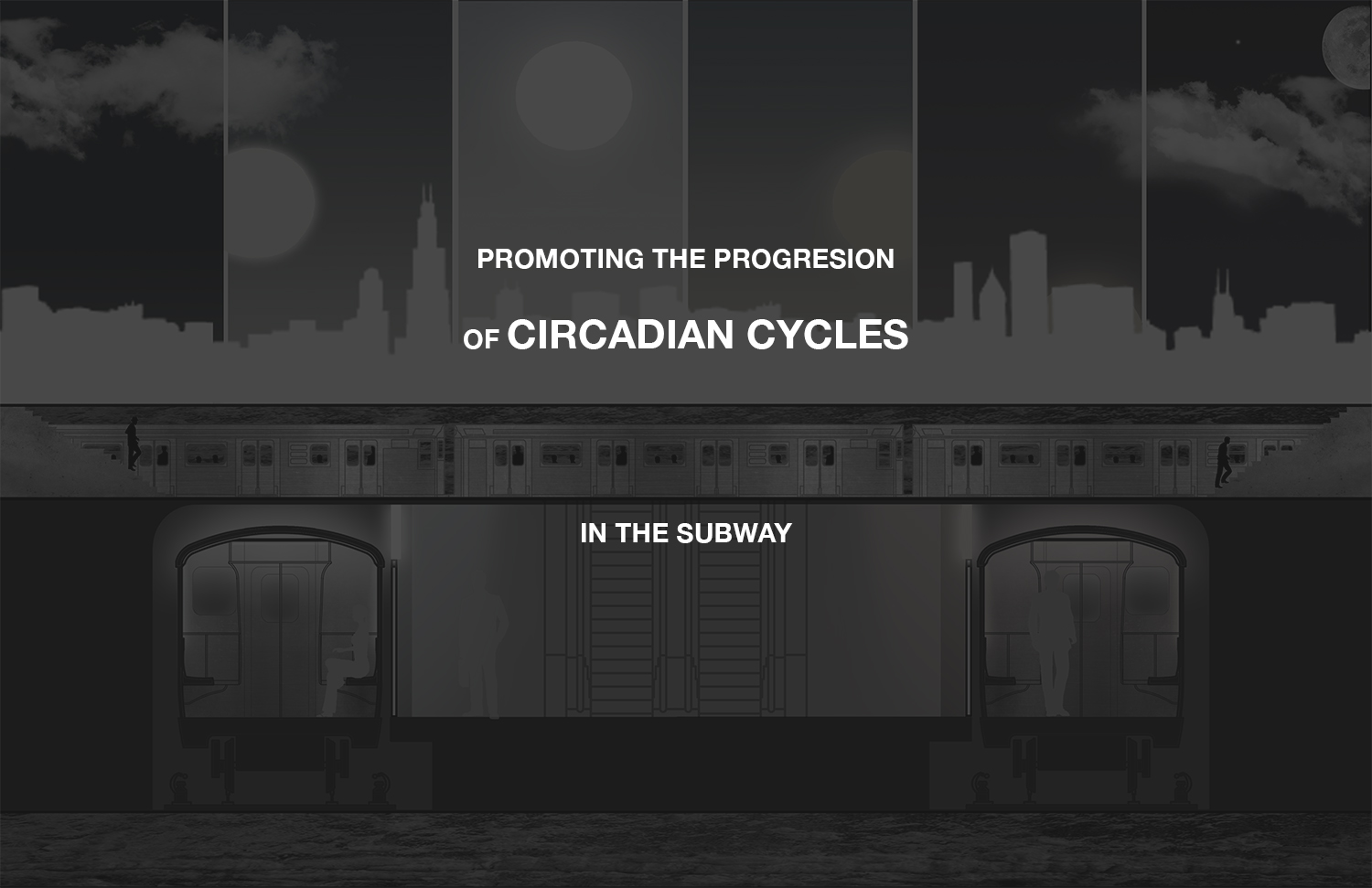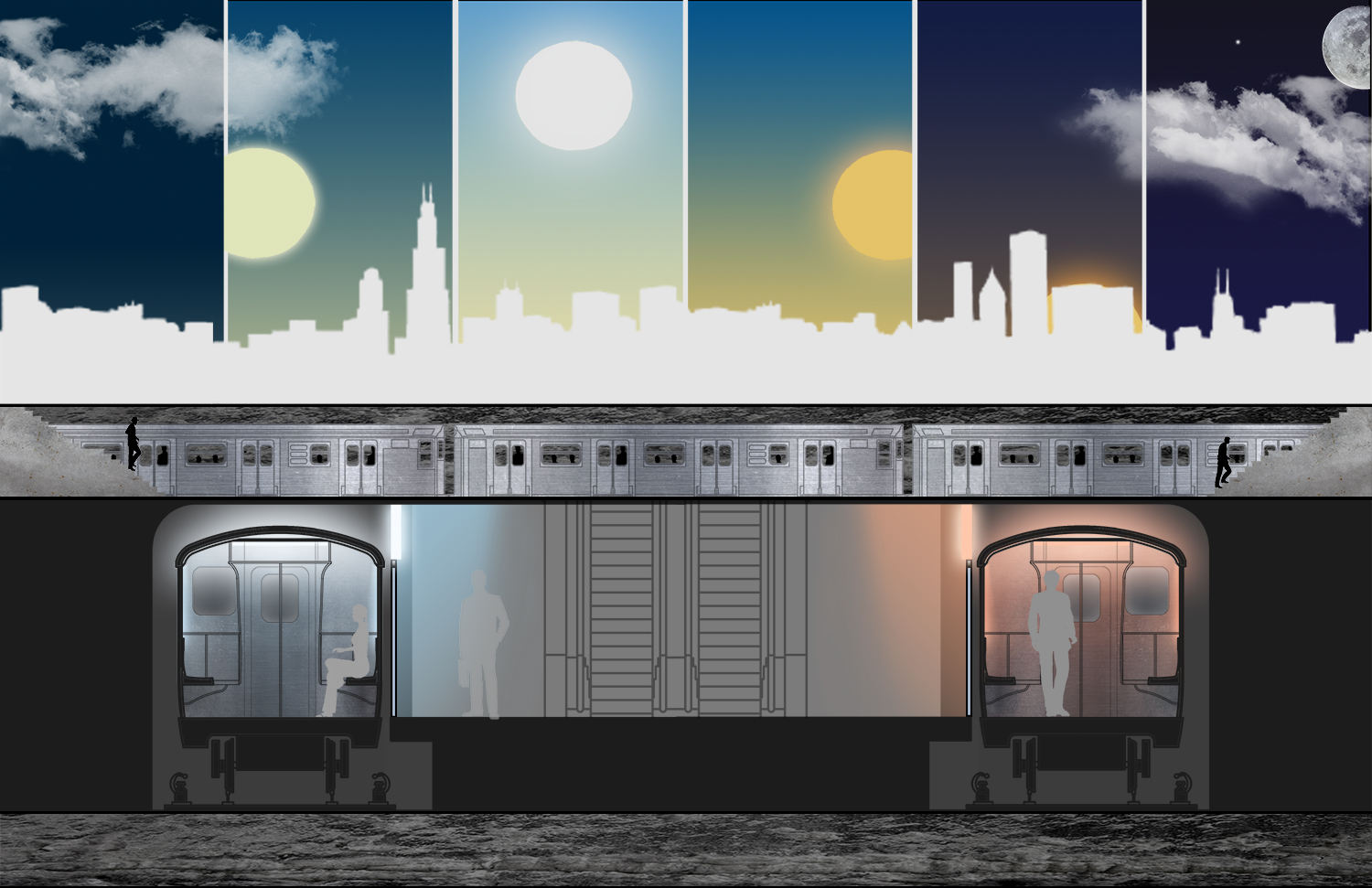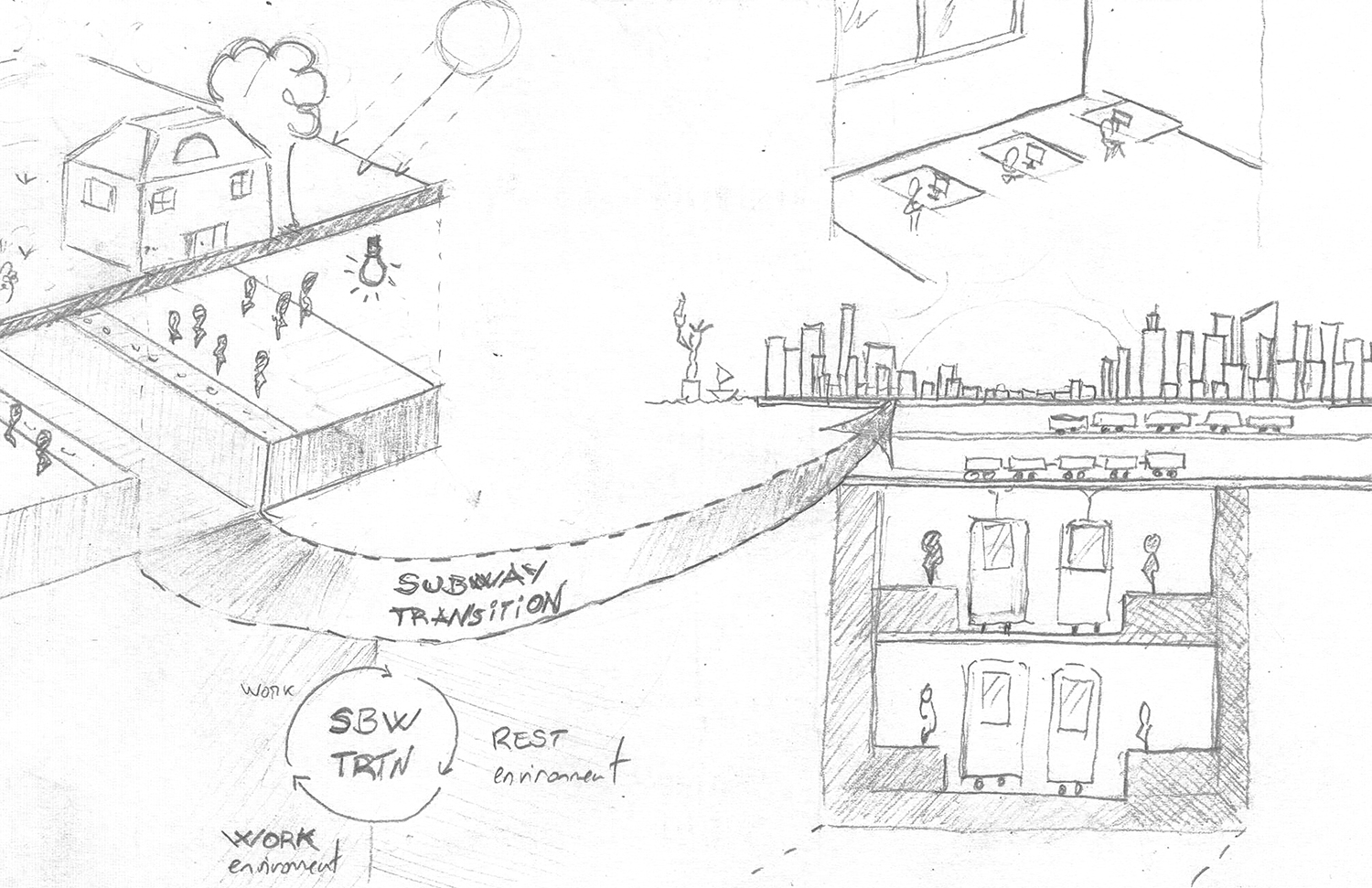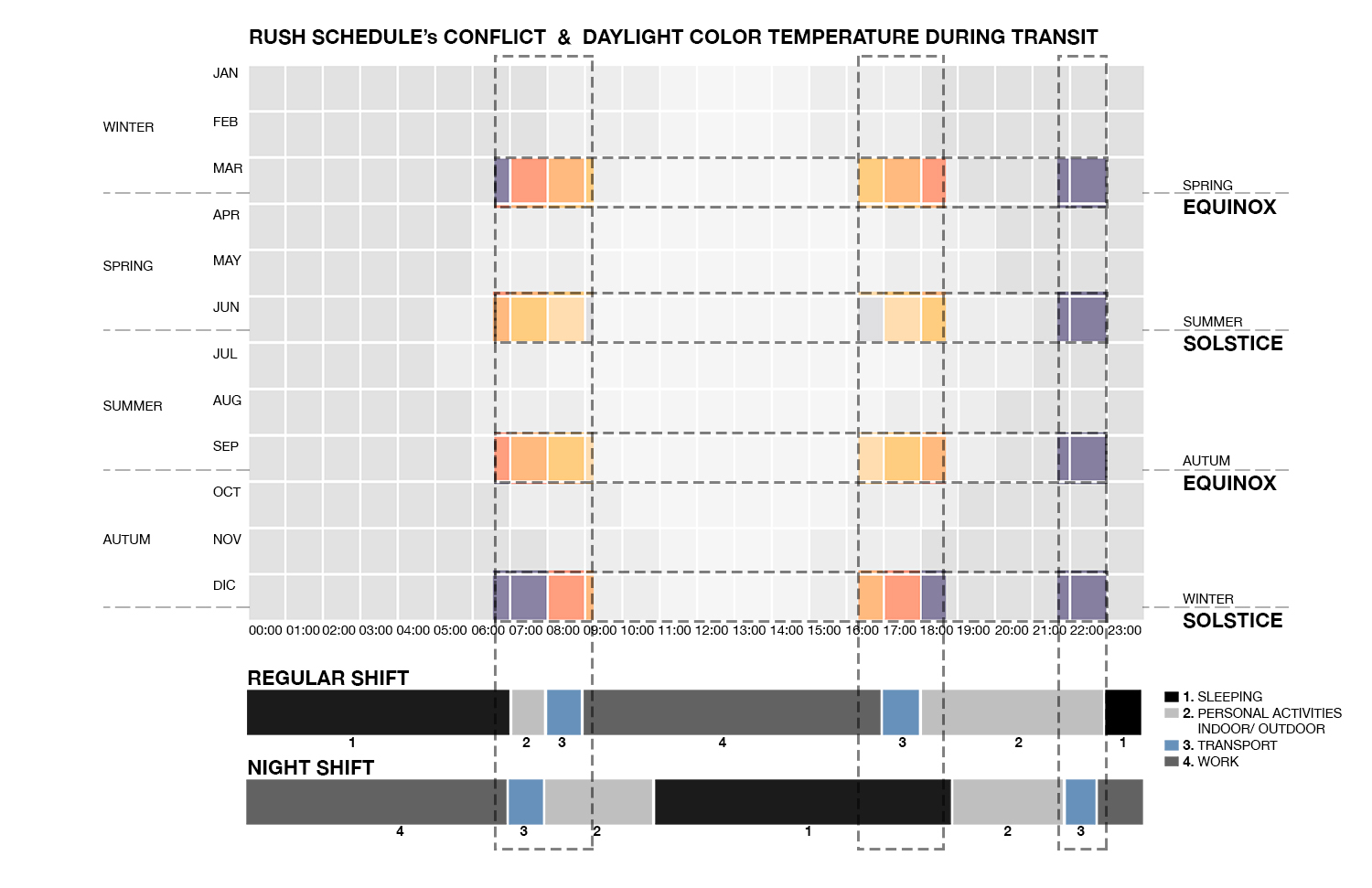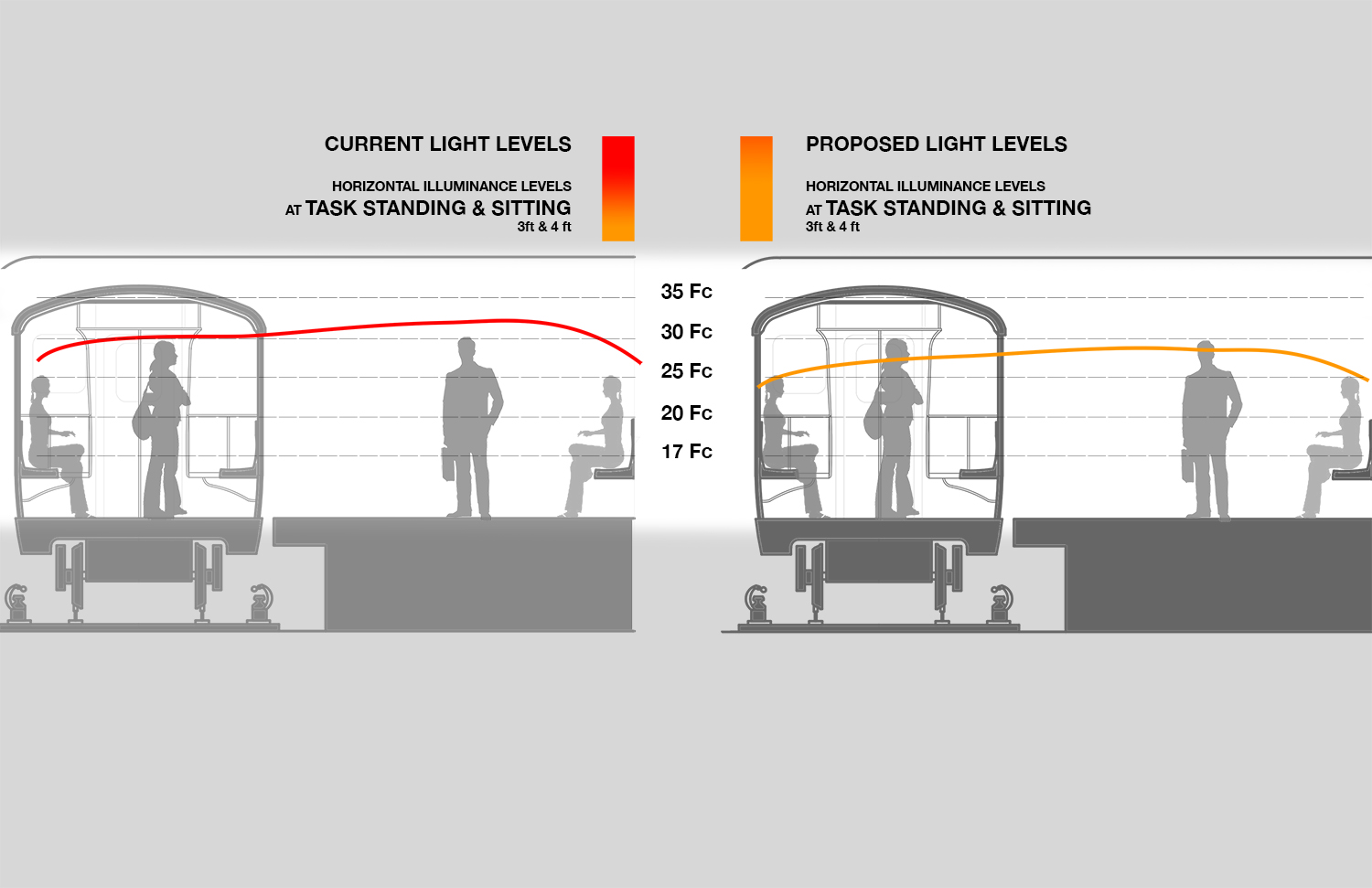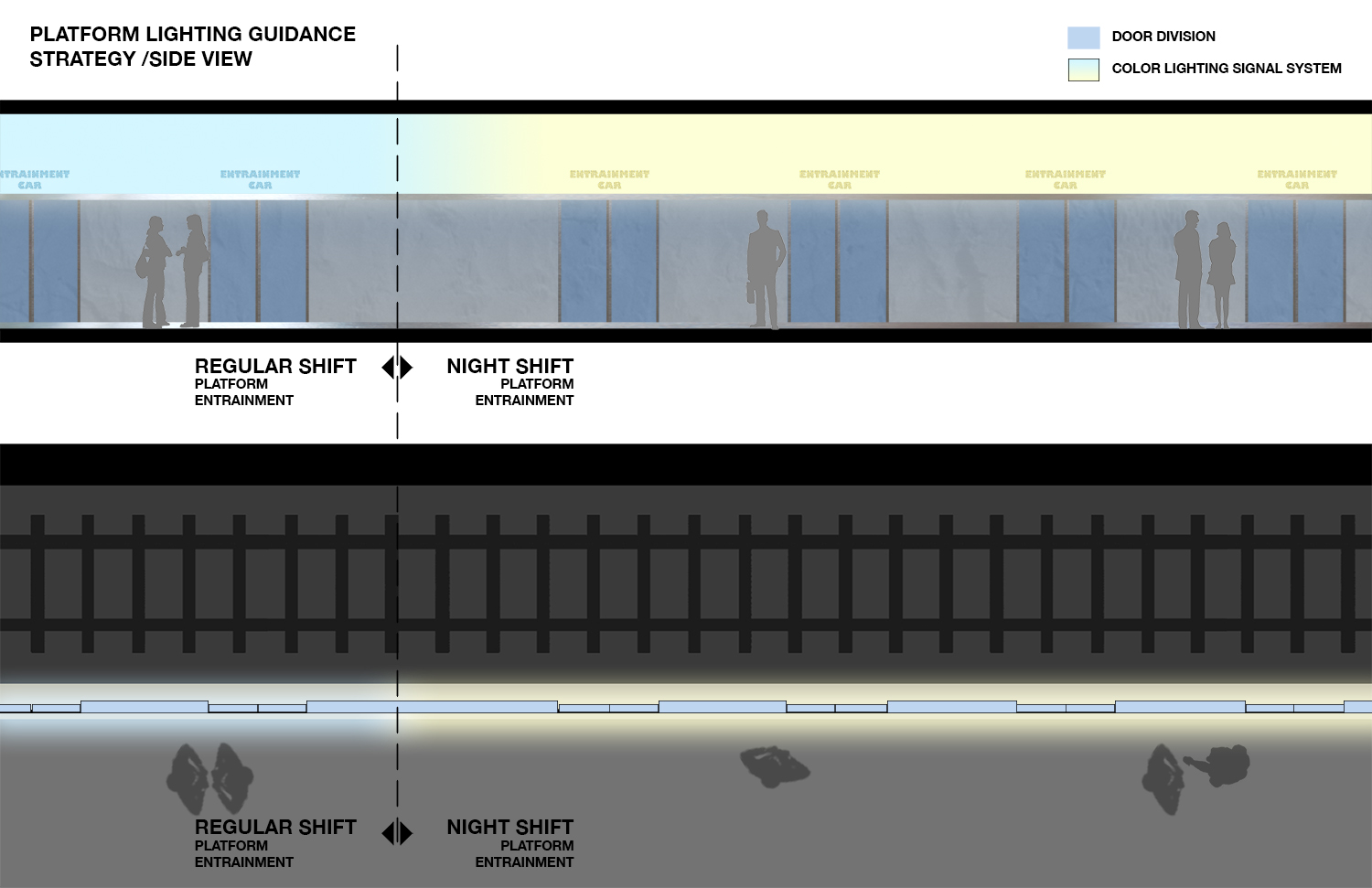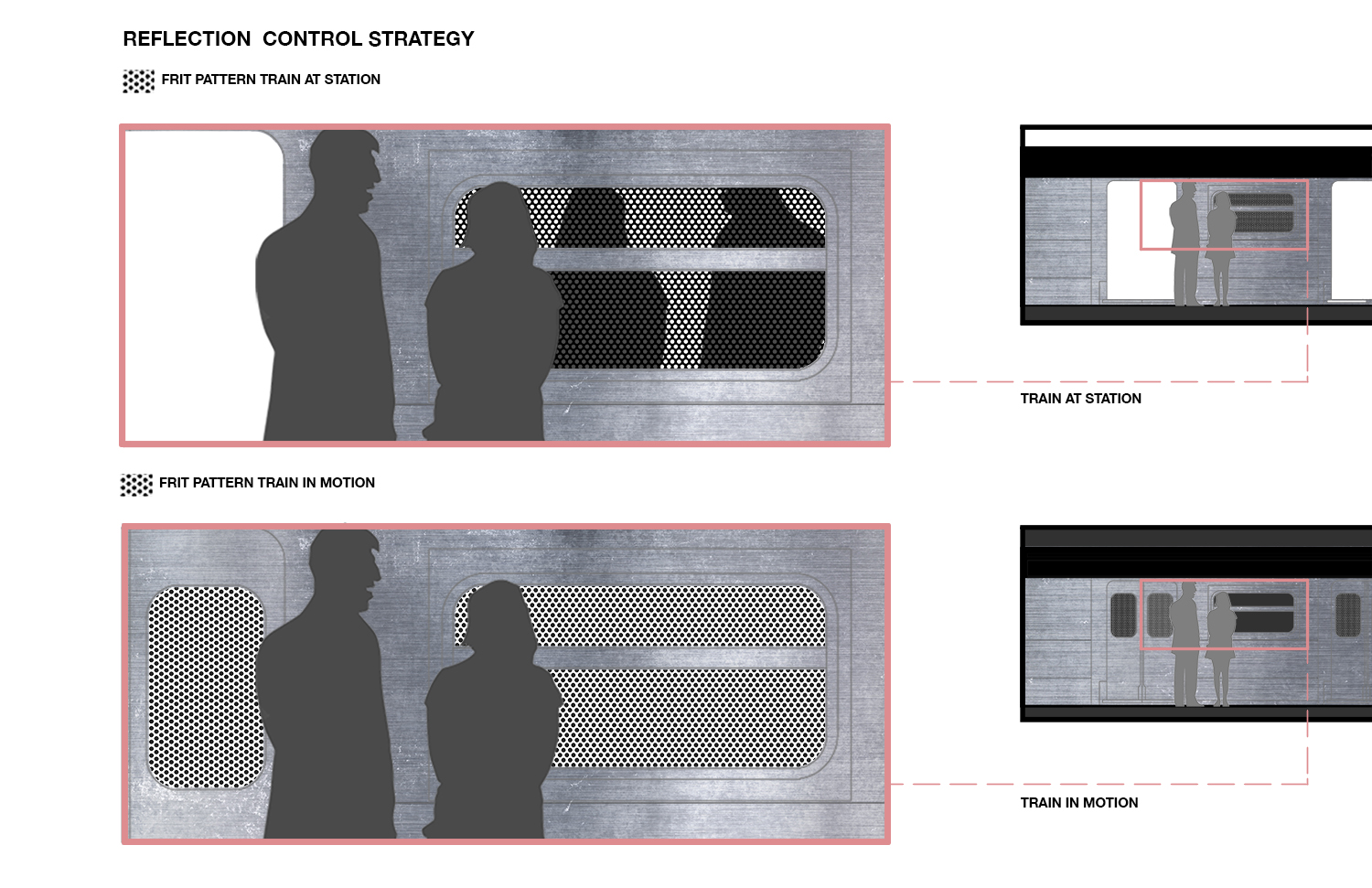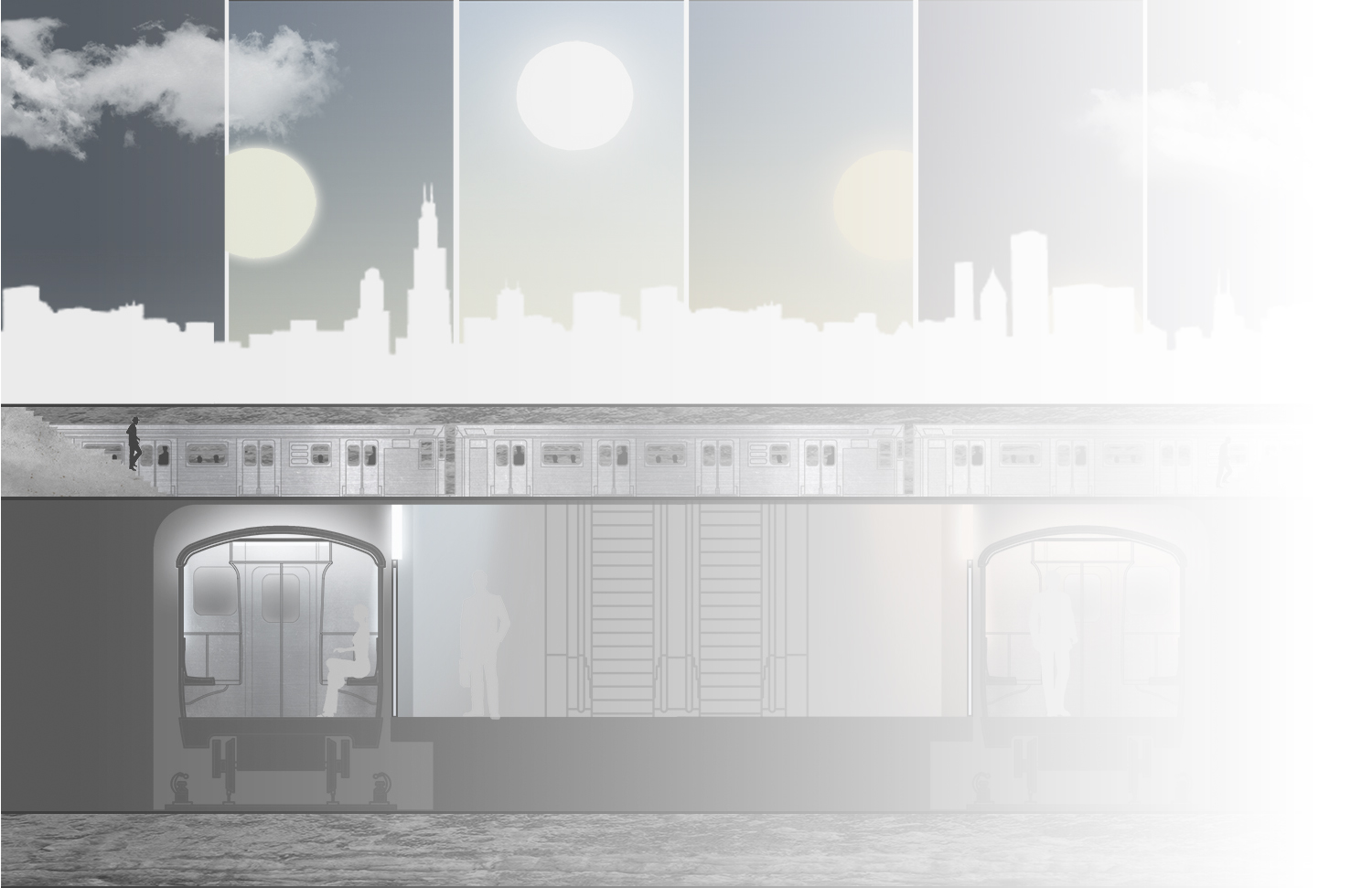
Circadian rhythm cycles, or sleep cycles, are humans’ biological clock. Our response to natural external factors, especially to light exposure on the eyes, greatly affects the quality of our sleep cycles on a daily basis. Understanding the lighting patterns or routine of activities that we perform can help us to regulate our sleep cycles for optimum health and productivity. To design public spaces in which care is placed on facilitating the natural progression of circadian rhythms, a focus on human synchronization with light exposure, as well as the quality of light, is crucial.
A significant challenge faced by lighting designers for 24-hour public transport, when considering circadian rhythms, is to accommodate the opposing needs of nightshift riders and daytime riders. Nightshift riders cross circulation paths with dayshift riders creating tension for the lighting strategies so a better lighting distribution for the best circadian entrainment of both users.
The New York MTA public transportation system currently does not promote the natural progression of circadian rhythms. Because of its 24-hour activity, there exists a need for the transport system to serve a double function: to transport passengers efficiently, while maintaining (and perhaps even promoting) their natural sensitivity to light through lighting therapy. These parallel functions are essential for better utilization and experience of these public spaces.
